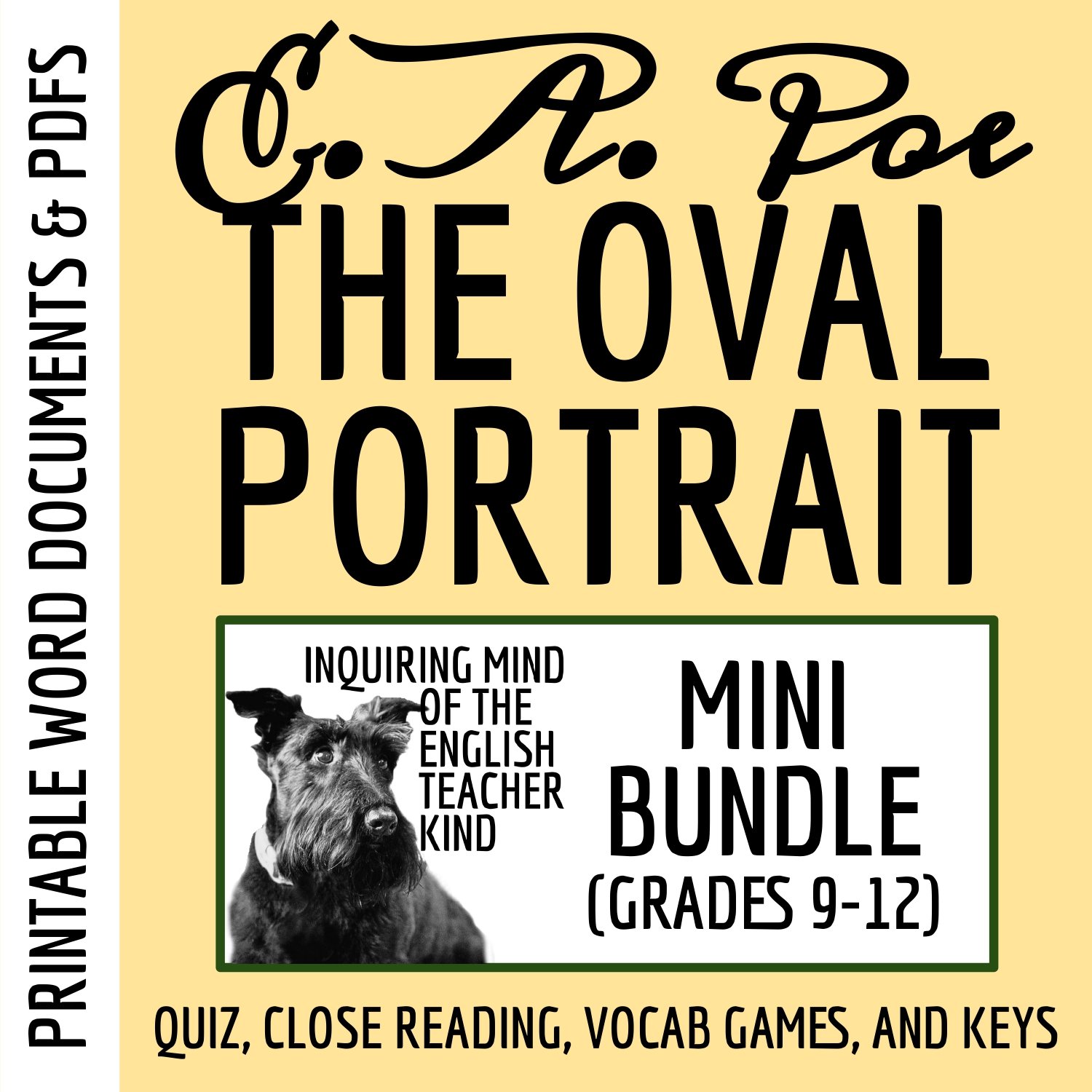 Image 1 of 20
Image 1 of 20

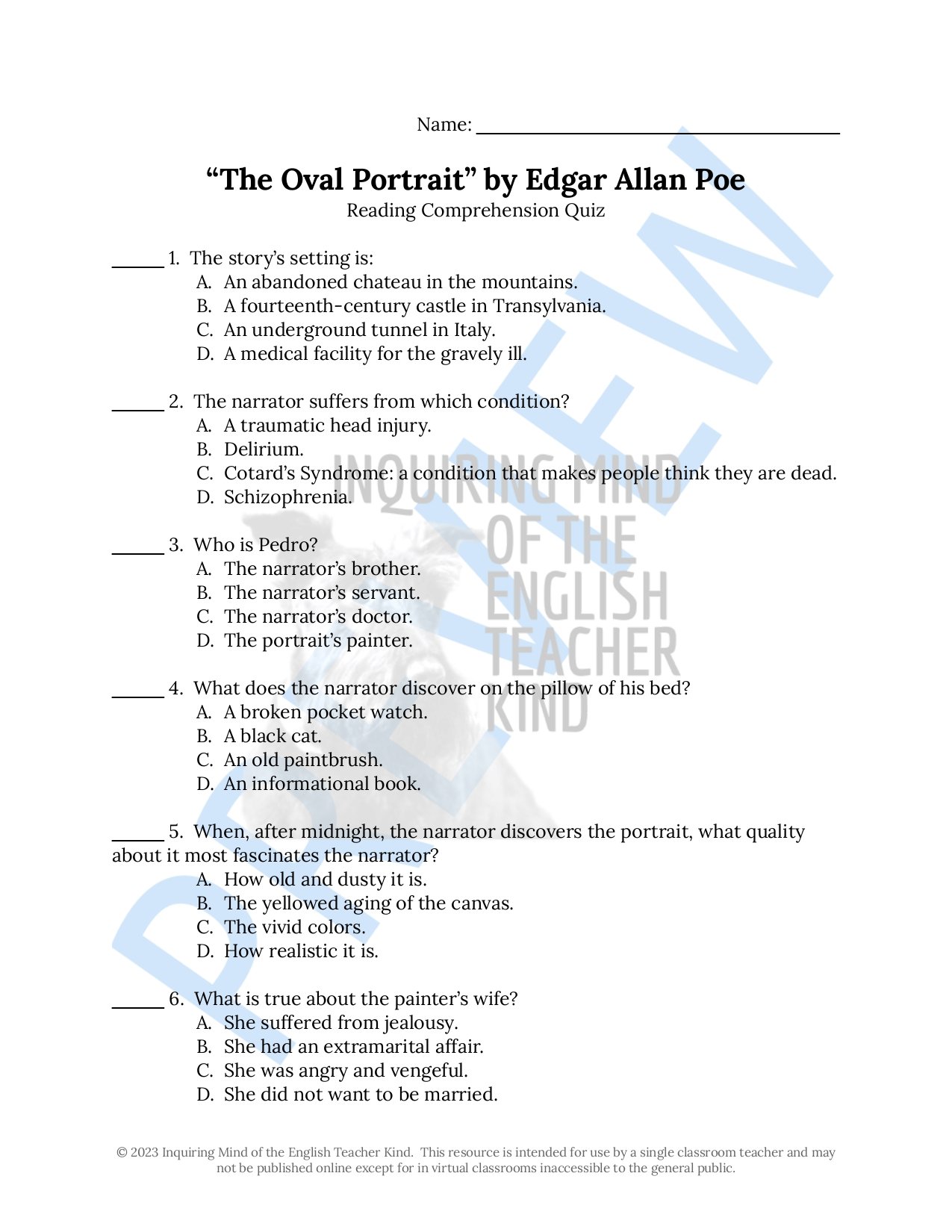 Image 2 of 20
Image 2 of 20

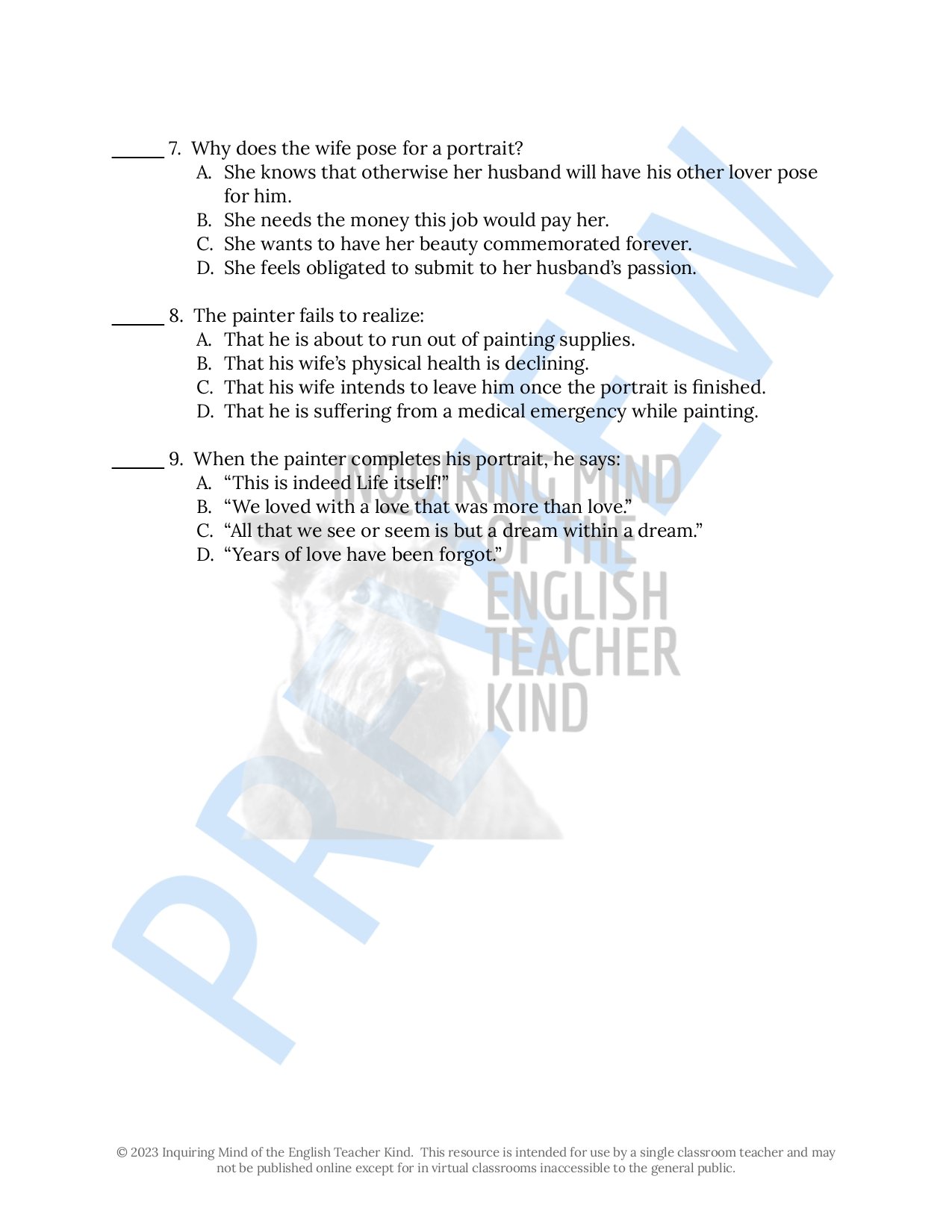 Image 3 of 20
Image 3 of 20

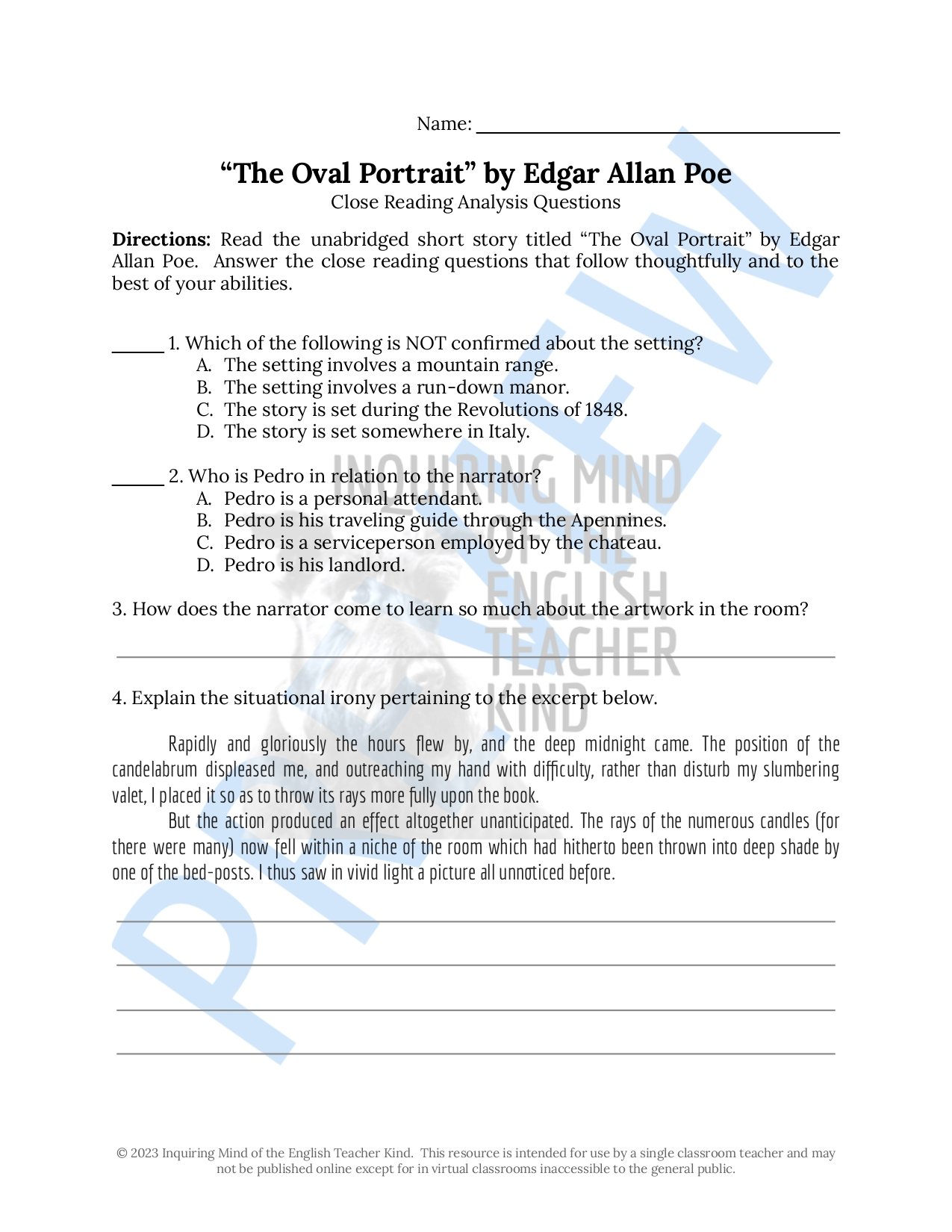 Image 4 of 20
Image 4 of 20

 Image 5 of 20
Image 5 of 20

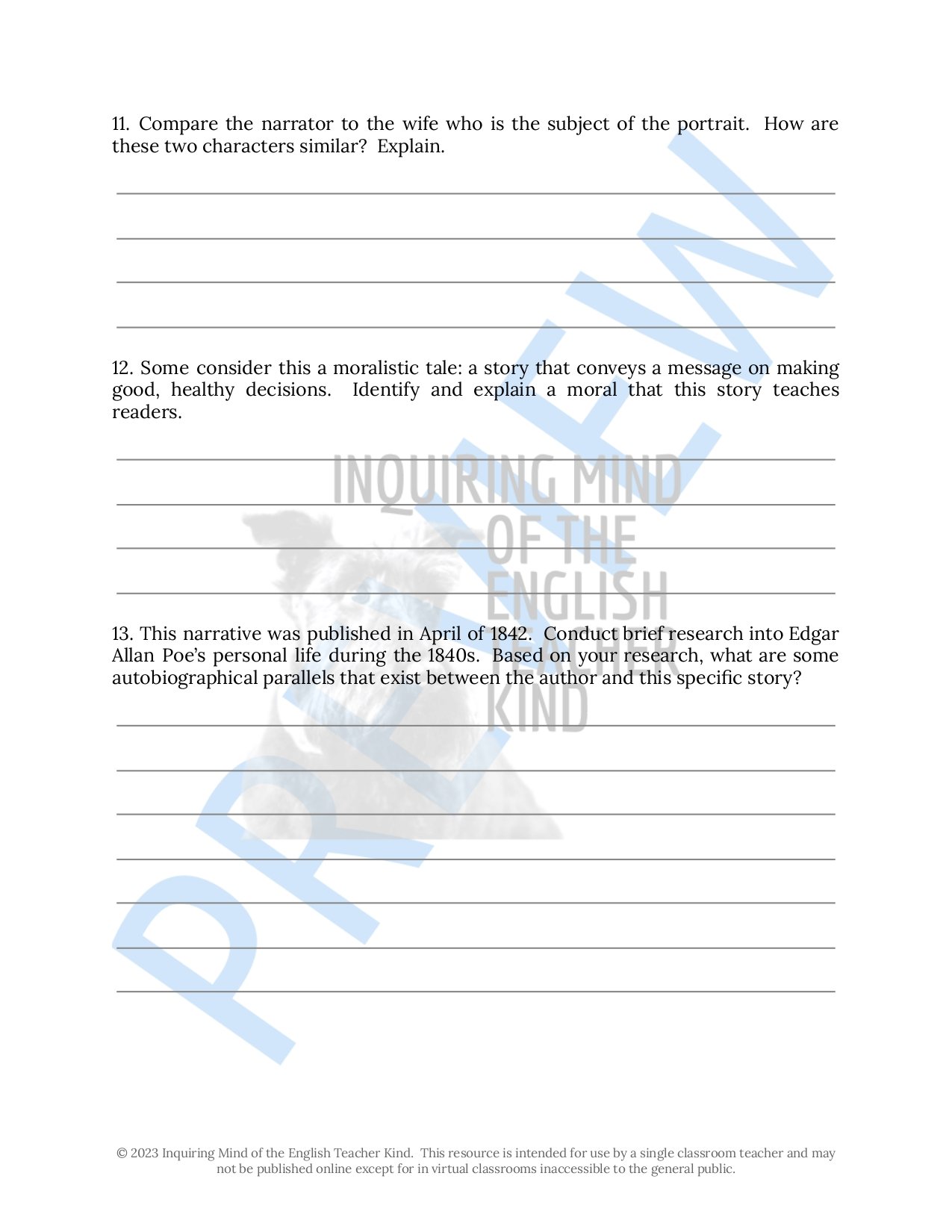 Image 6 of 20
Image 6 of 20

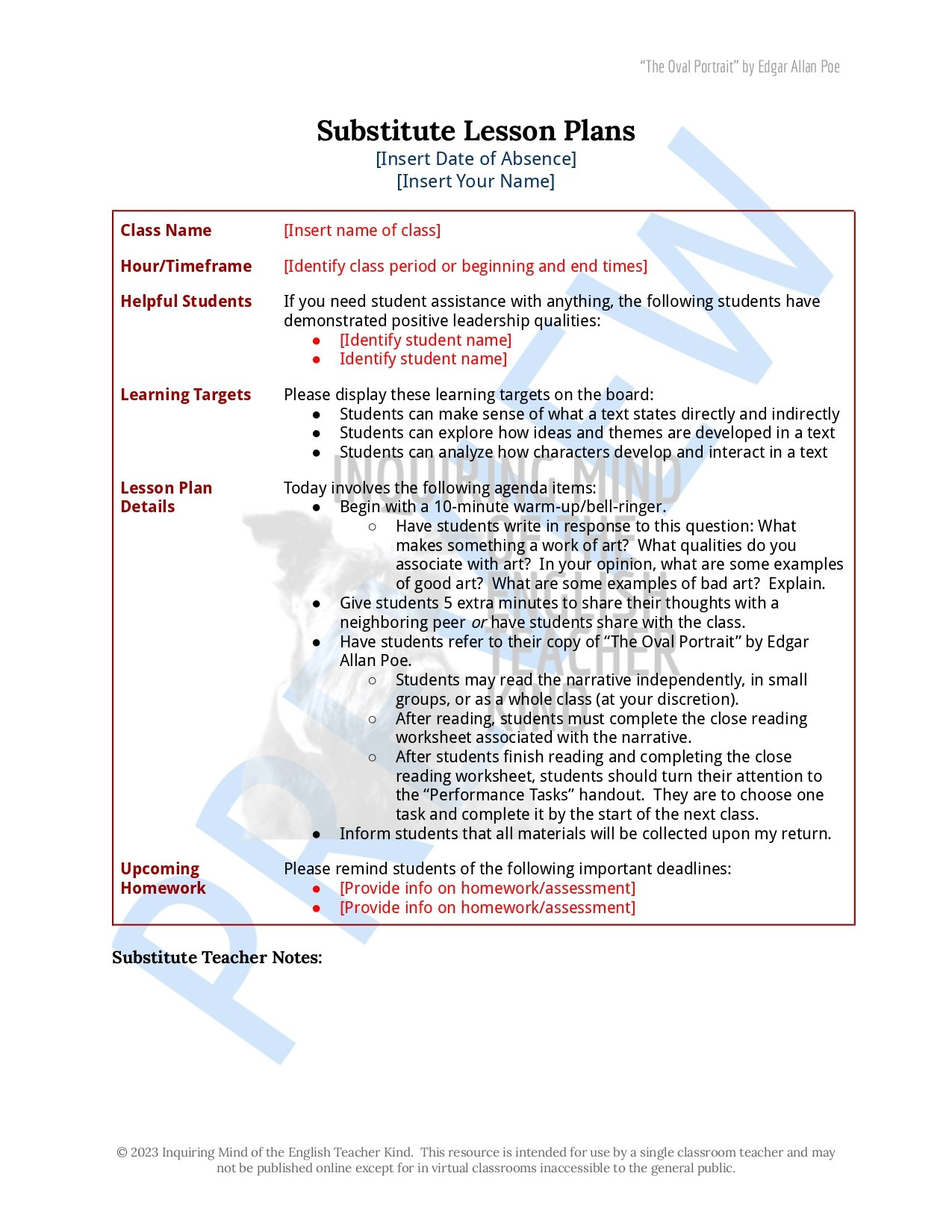 Image 7 of 20
Image 7 of 20

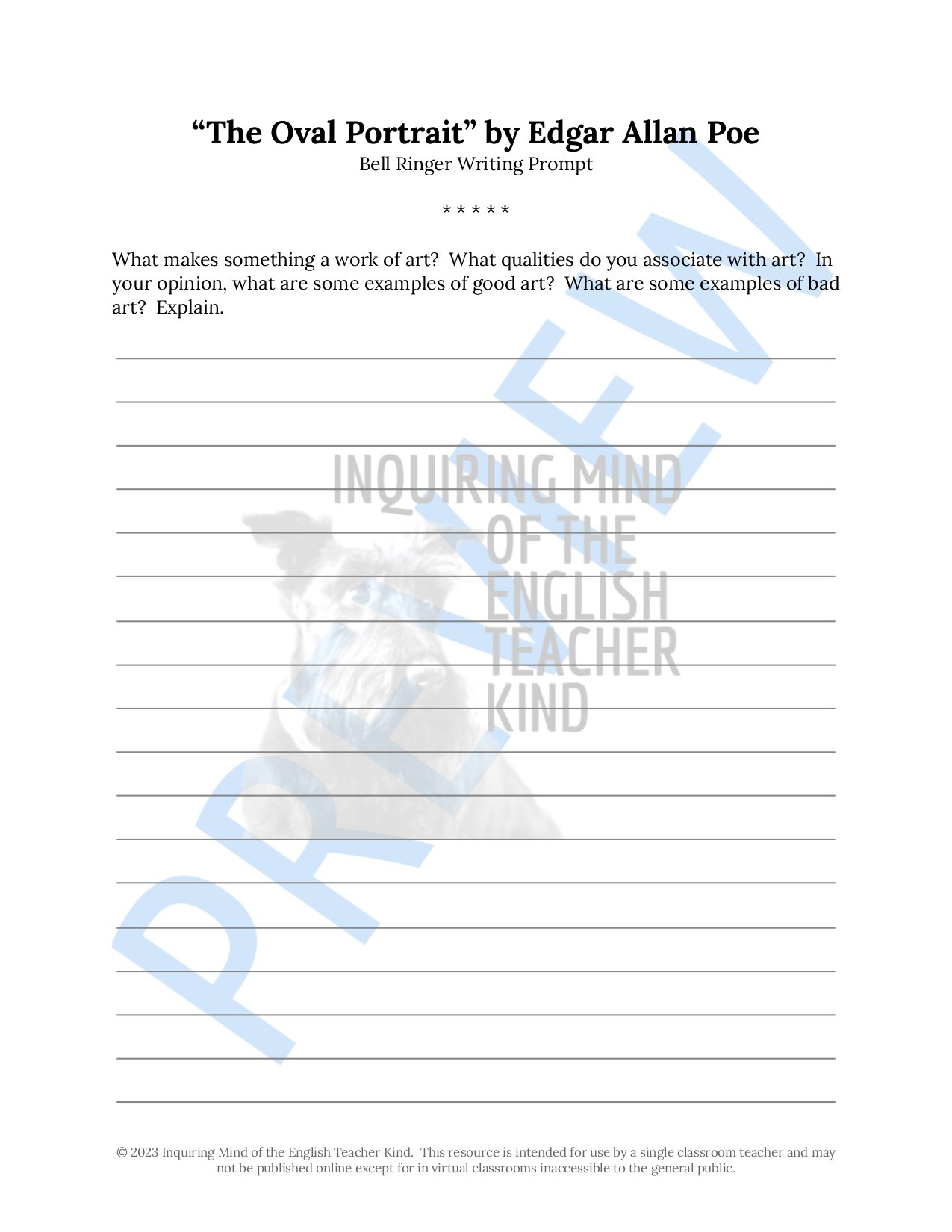 Image 8 of 20
Image 8 of 20

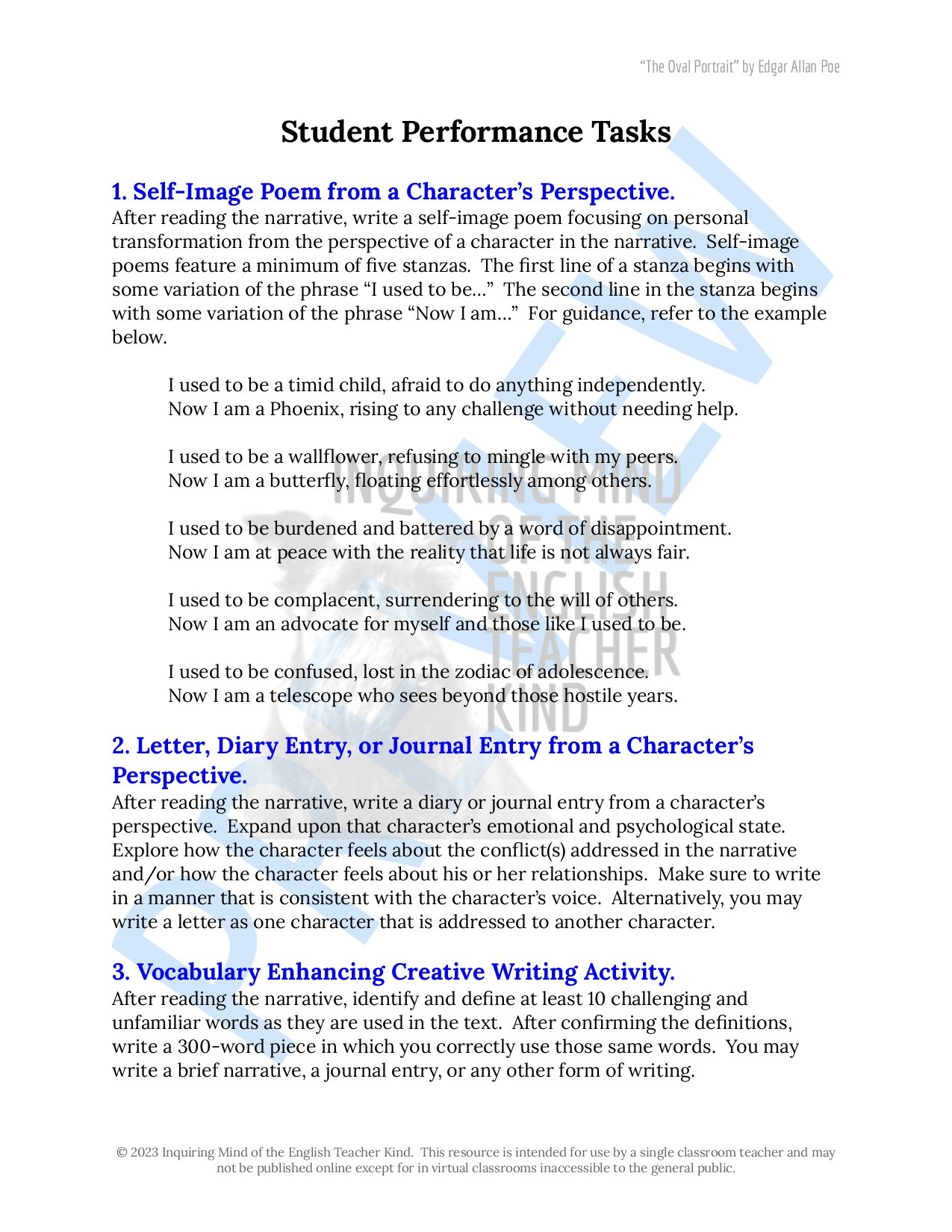 Image 9 of 20
Image 9 of 20

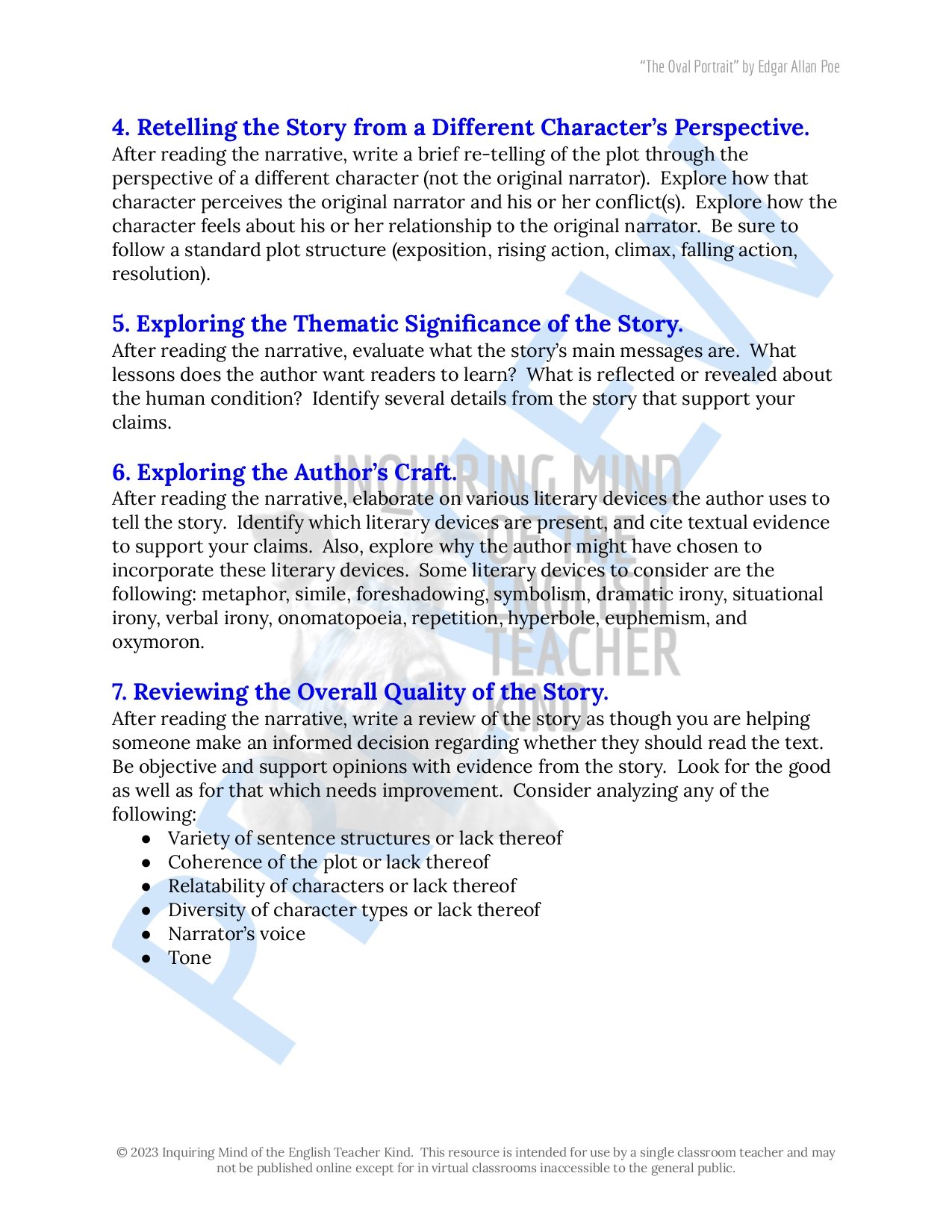 Image 10 of 20
Image 10 of 20

 Image 11 of 20
Image 11 of 20

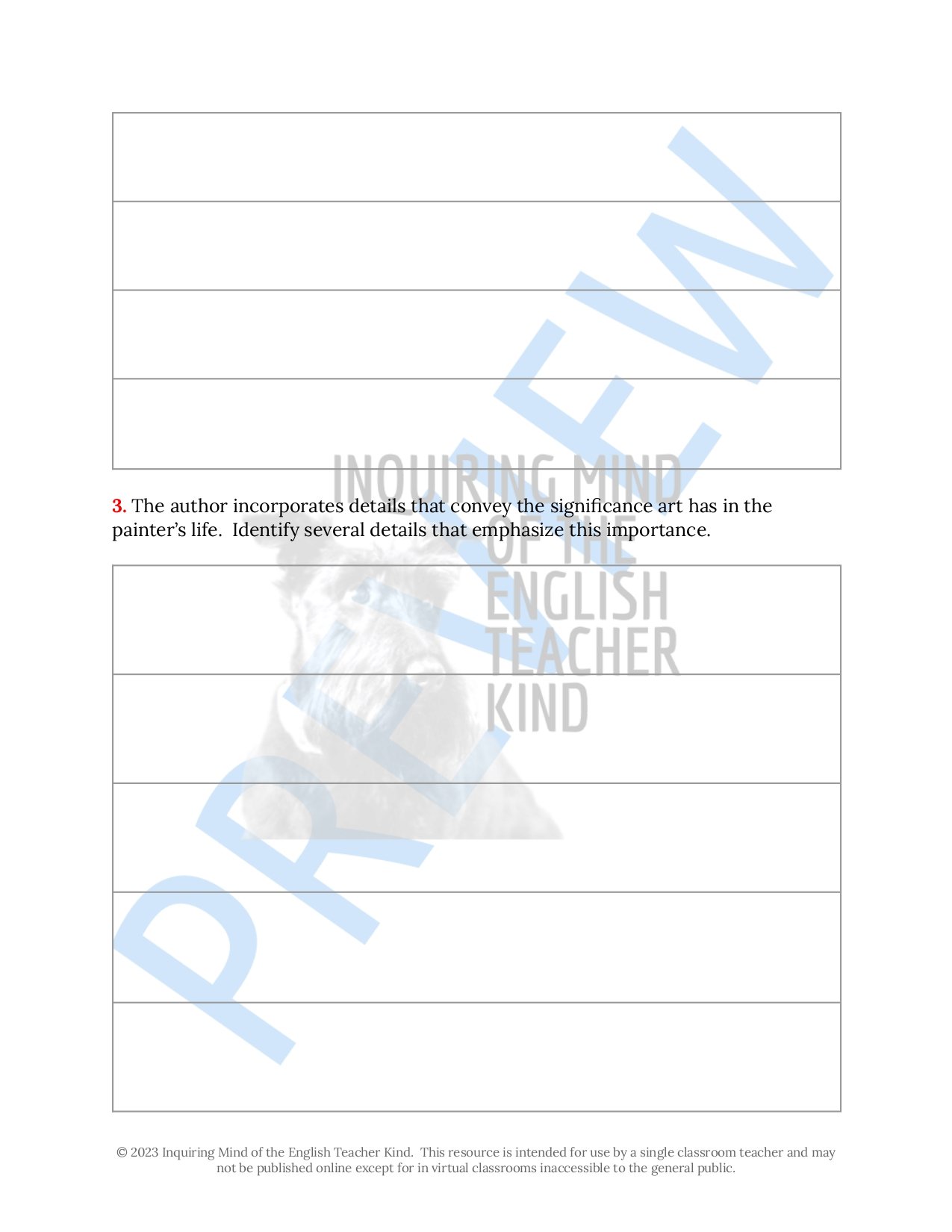 Image 12 of 20
Image 12 of 20

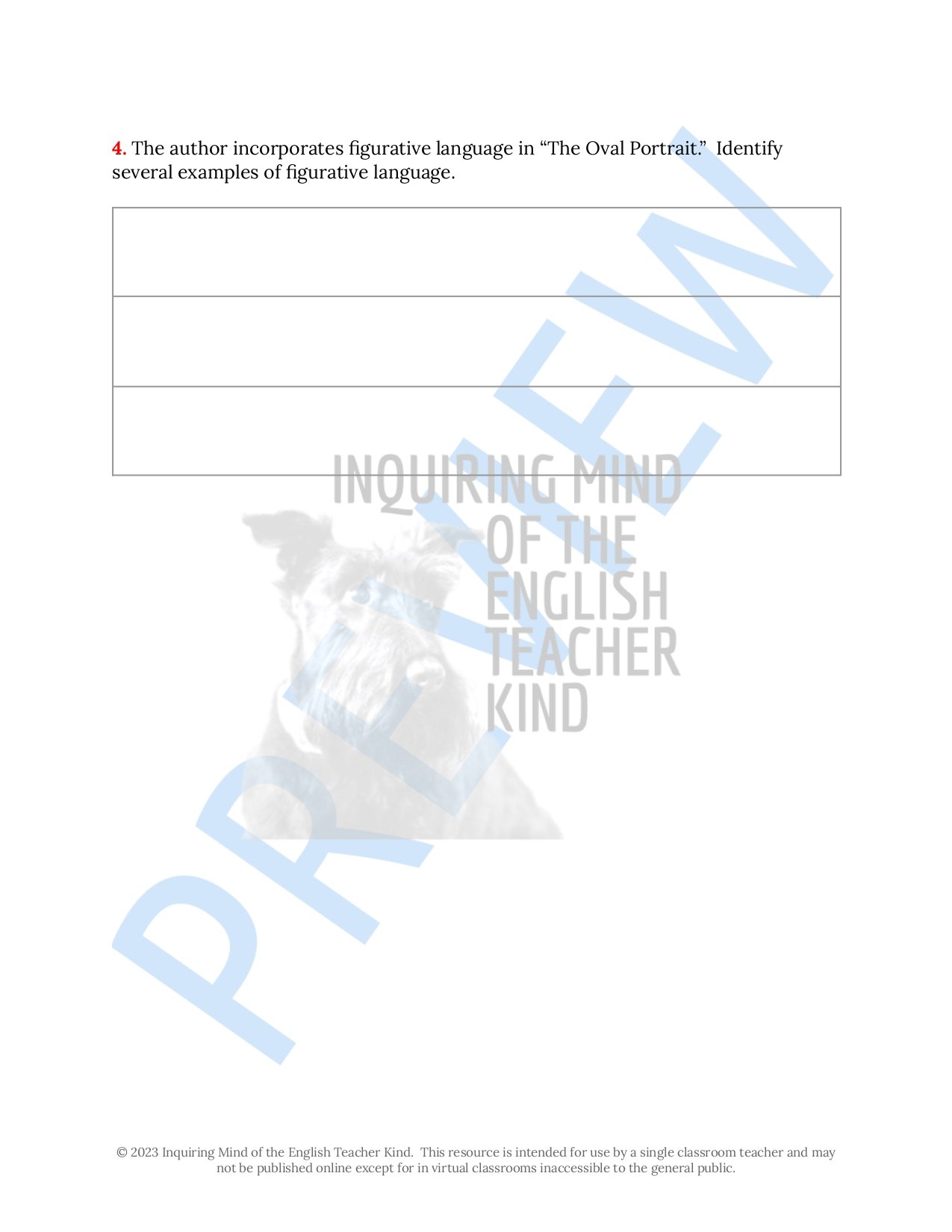 Image 13 of 20
Image 13 of 20

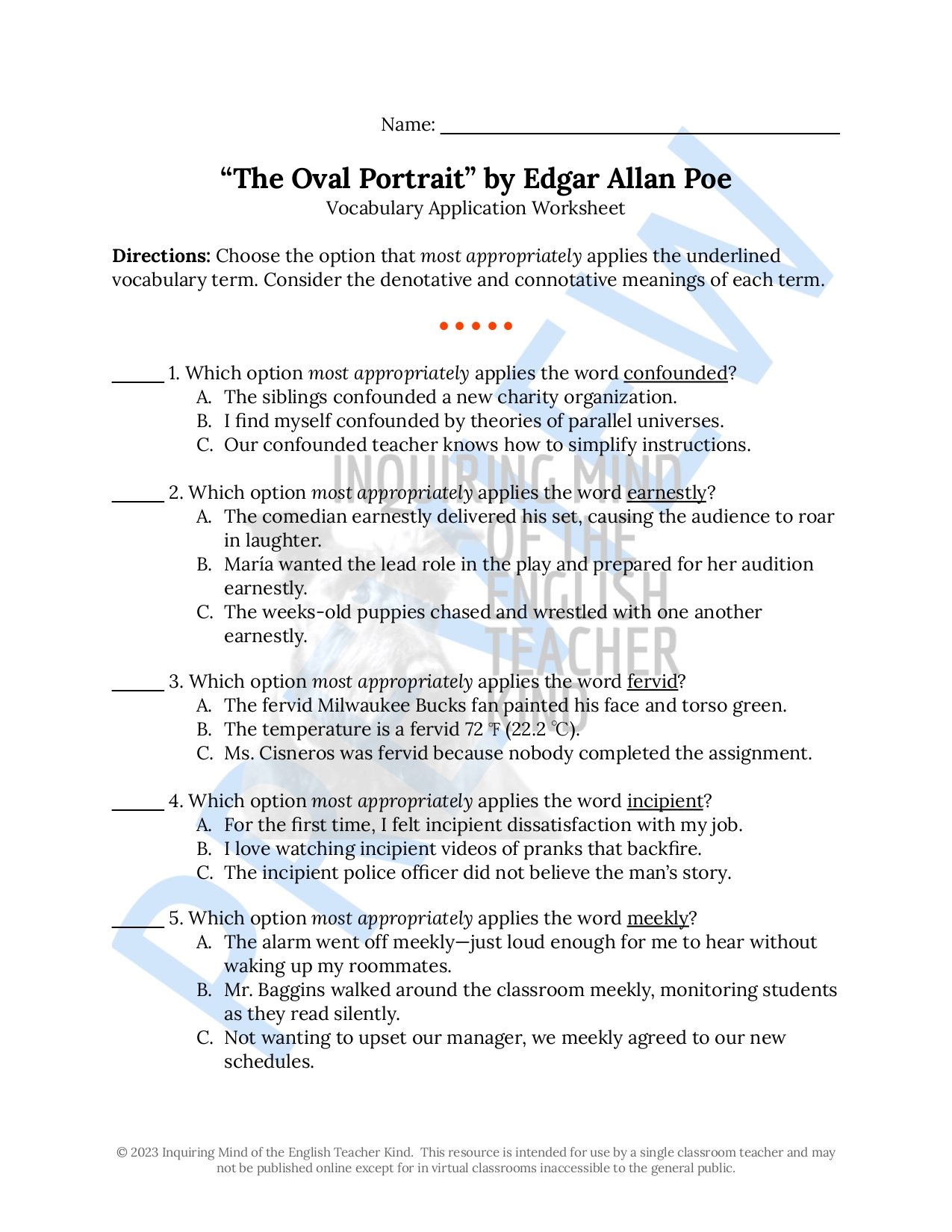 Image 14 of 20
Image 14 of 20

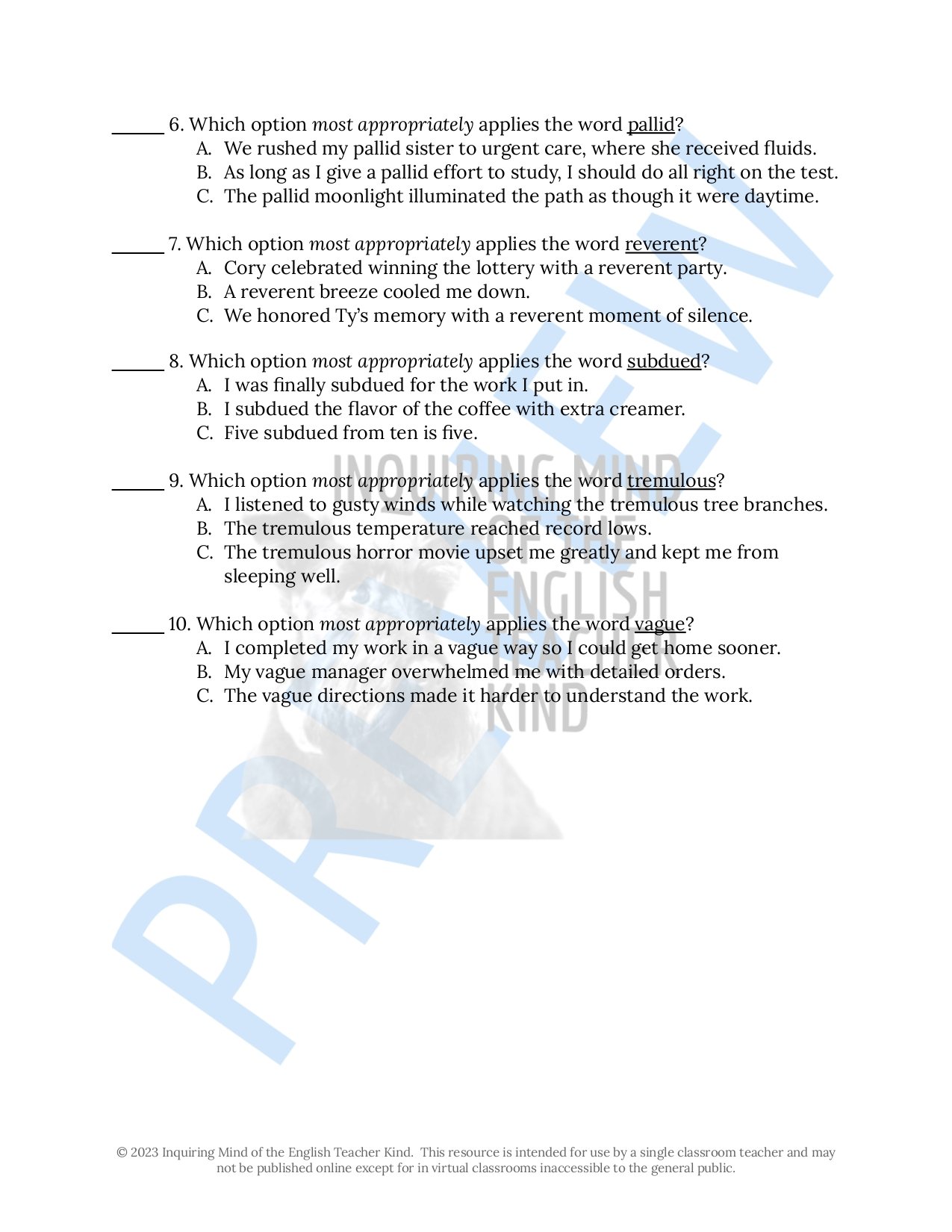 Image 15 of 20
Image 15 of 20

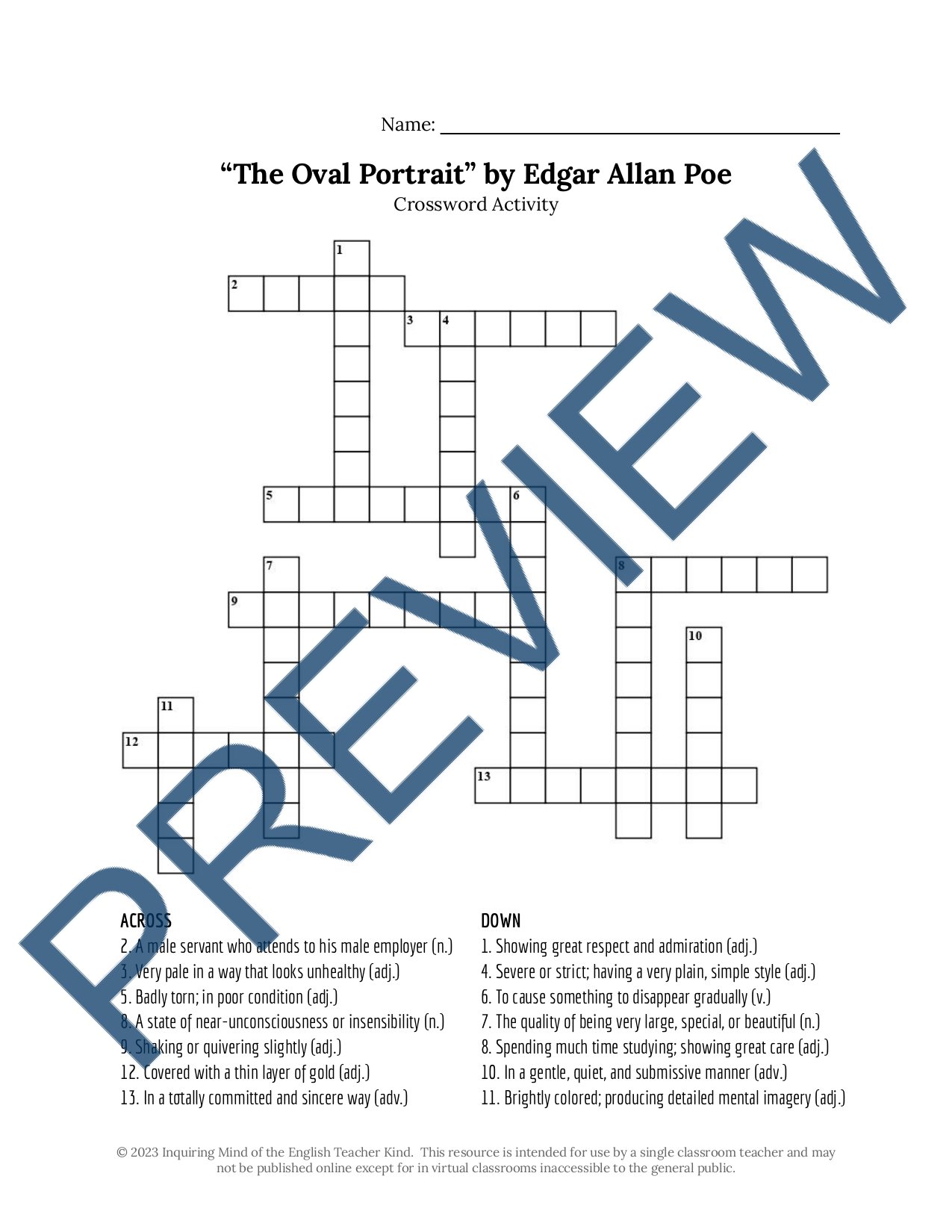 Image 16 of 20
Image 16 of 20

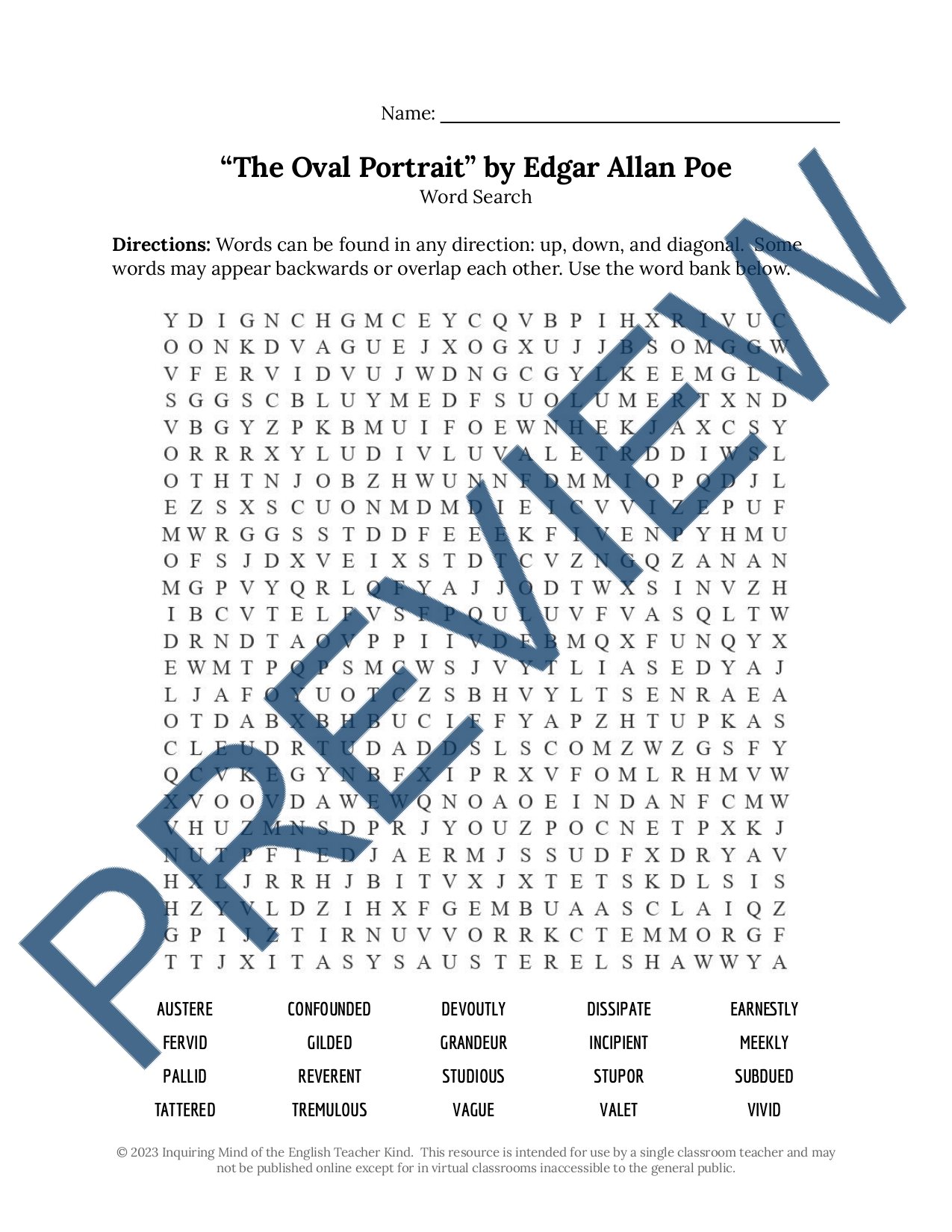 Image 17 of 20
Image 17 of 20

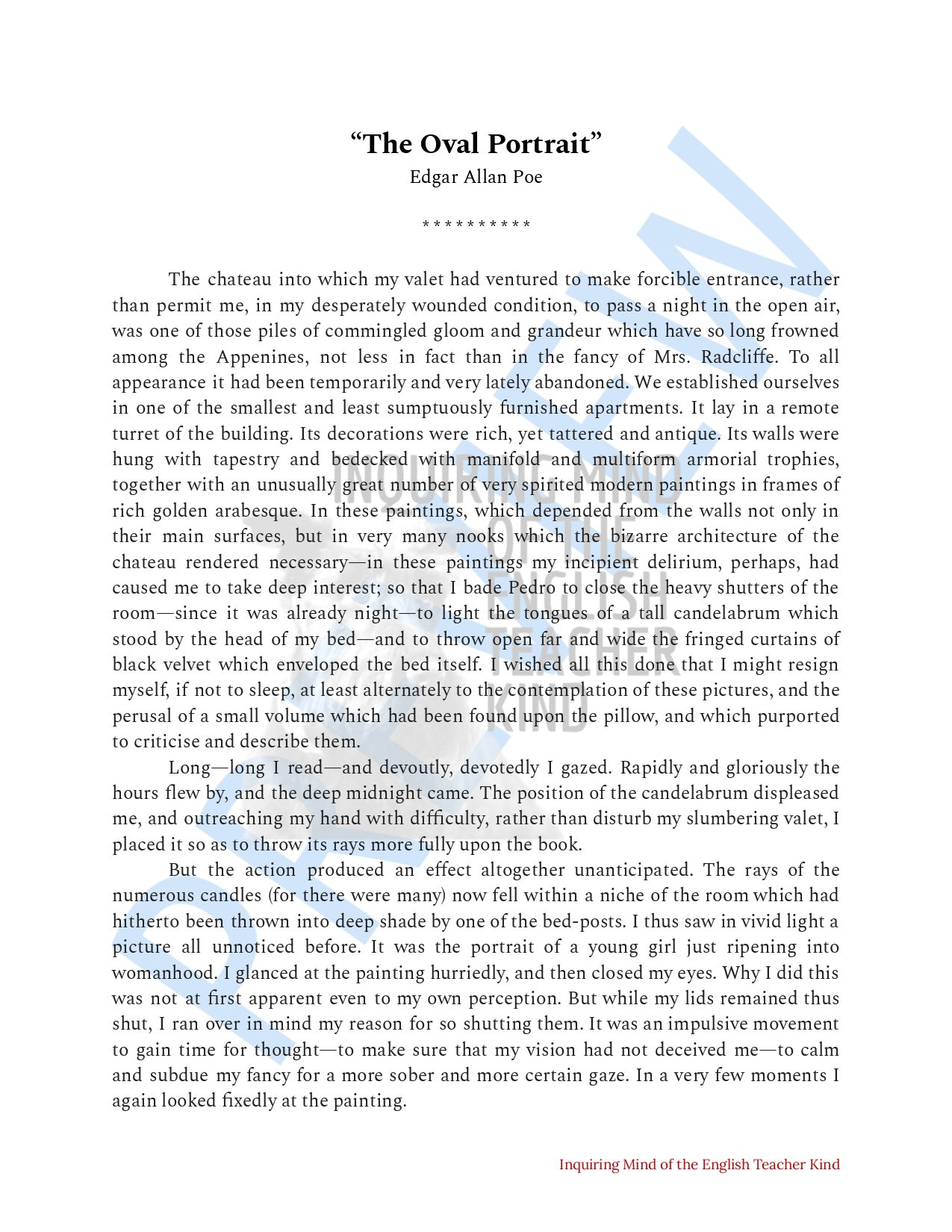 Image 18 of 20
Image 18 of 20

 Image 19 of 20
Image 19 of 20

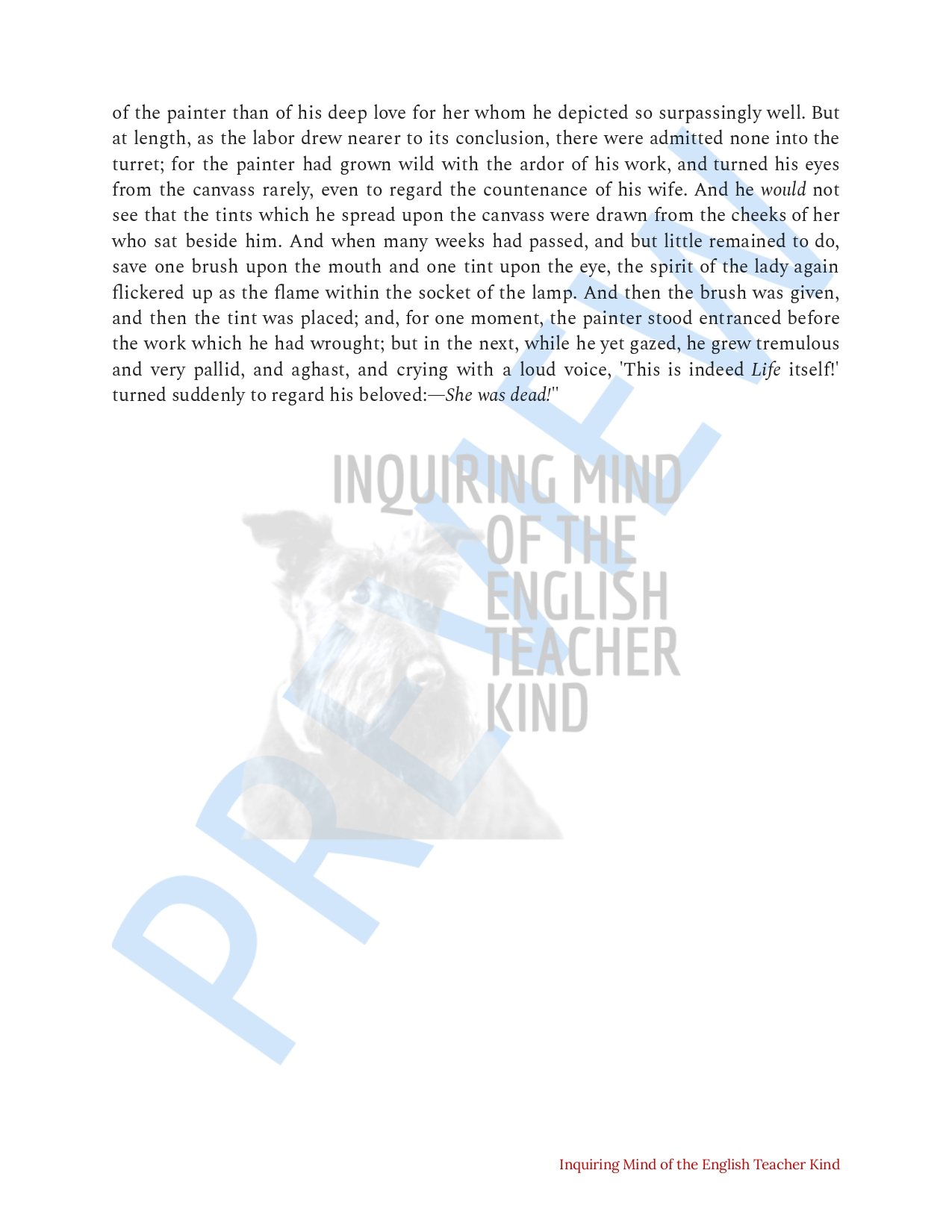 Image 20 of 20
Image 20 of 20





















"The Oval Portrait" by Edgar Allan Poe Quiz, Close Reading Worksheet, and Vocabulary Games
Evaluate reading comprehension, encourage critical thinking, prepare for unexpected absences, and eliminate take-home assessment planning with this bundle of materials for teaching the Gothic short story "The Oval Portrait" by Edgar Allan Poe. Included are the following: a plot-based quiz, a close reading worksheet, a craft analysis activity, a vocabulary application exercise, a crossword puzzle, a word search game, the public domain narrative, and answer keys. Materials are delivered in editable Word Document and printable PDF formats. (Alternatively, a Google Drive bundle option is available.) By engaging with these materials, students will:
Identify what the text states explicitly and implicitly
Determine the meaning of unfamiliar and complex words
Consult reference materials in order to learn and verify word meanings
Choose the most proper application of words as they are used in sentences
Discern the intended effects of the author's stylistic choices
Explore how complex characters think, behave, interact, and develop
Compare two characters
Conduct brief research into Poe's personal life to explain autobiographical parallels between the author and the plot of the text
Apply knowledge of literary devices including alliteration, assonance, metaphor, simile, and more
Support claims and inferences with sound logic and relevant evidence
Write about Gothic fiction with clarity, accuracy, and precision
In the event of a teacher absence, the following supplemental items are also provided:
Low-prep lesson plan for unexpected absences. This comes pre-filled with learning targets and agenda items. Space is also designated for classroom teachers to identify the name(s) of their class(es), the hour(s) of their class(es), student leaders, and upcoming homework assignments and assessments.
Bell ringer activity. Help a substitute teacher engage students (and find time to take attendance) with a thematically linked writing prompt.
Miscellaneous performance tasks handout. Extend student thinking and learning in the event of unexpected absences with this item outlining creative tasks pertaining to the short story. For example, students may write poetry or journal entries from the perspective of a character; write a brief retelling of the narrative from a different character's perspective; explore the thematic significance of stories; review the overall quality of the narrative with objectivity and supporting evidence; and more.
Resources are available for a variety of Gothic novels and short stories:
Evaluate reading comprehension, encourage critical thinking, prepare for unexpected absences, and eliminate take-home assessment planning with this bundle of materials for teaching the Gothic short story "The Oval Portrait" by Edgar Allan Poe. Included are the following: a plot-based quiz, a close reading worksheet, a craft analysis activity, a vocabulary application exercise, a crossword puzzle, a word search game, the public domain narrative, and answer keys. Materials are delivered in editable Word Document and printable PDF formats. (Alternatively, a Google Drive bundle option is available.) By engaging with these materials, students will:
Identify what the text states explicitly and implicitly
Determine the meaning of unfamiliar and complex words
Consult reference materials in order to learn and verify word meanings
Choose the most proper application of words as they are used in sentences
Discern the intended effects of the author's stylistic choices
Explore how complex characters think, behave, interact, and develop
Compare two characters
Conduct brief research into Poe's personal life to explain autobiographical parallels between the author and the plot of the text
Apply knowledge of literary devices including alliteration, assonance, metaphor, simile, and more
Support claims and inferences with sound logic and relevant evidence
Write about Gothic fiction with clarity, accuracy, and precision
In the event of a teacher absence, the following supplemental items are also provided:
Low-prep lesson plan for unexpected absences. This comes pre-filled with learning targets and agenda items. Space is also designated for classroom teachers to identify the name(s) of their class(es), the hour(s) of their class(es), student leaders, and upcoming homework assignments and assessments.
Bell ringer activity. Help a substitute teacher engage students (and find time to take attendance) with a thematically linked writing prompt.
Miscellaneous performance tasks handout. Extend student thinking and learning in the event of unexpected absences with this item outlining creative tasks pertaining to the short story. For example, students may write poetry or journal entries from the perspective of a character; write a brief retelling of the narrative from a different character's perspective; explore the thematic significance of stories; review the overall quality of the narrative with objectivity and supporting evidence; and more.
Resources are available for a variety of Gothic novels and short stories:
Evaluate reading comprehension, encourage critical thinking, prepare for unexpected absences, and eliminate take-home assessment planning with this bundle of materials for teaching the Gothic short story "The Oval Portrait" by Edgar Allan Poe. Included are the following: a plot-based quiz, a close reading worksheet, a craft analysis activity, a vocabulary application exercise, a crossword puzzle, a word search game, the public domain narrative, and answer keys. Materials are delivered in editable Word Document and printable PDF formats. (Alternatively, a Google Drive bundle option is available.) By engaging with these materials, students will:
Identify what the text states explicitly and implicitly
Determine the meaning of unfamiliar and complex words
Consult reference materials in order to learn and verify word meanings
Choose the most proper application of words as they are used in sentences
Discern the intended effects of the author's stylistic choices
Explore how complex characters think, behave, interact, and develop
Compare two characters
Conduct brief research into Poe's personal life to explain autobiographical parallels between the author and the plot of the text
Apply knowledge of literary devices including alliteration, assonance, metaphor, simile, and more
Support claims and inferences with sound logic and relevant evidence
Write about Gothic fiction with clarity, accuracy, and precision
In the event of a teacher absence, the following supplemental items are also provided:
Low-prep lesson plan for unexpected absences. This comes pre-filled with learning targets and agenda items. Space is also designated for classroom teachers to identify the name(s) of their class(es), the hour(s) of their class(es), student leaders, and upcoming homework assignments and assessments.
Bell ringer activity. Help a substitute teacher engage students (and find time to take attendance) with a thematically linked writing prompt.
Miscellaneous performance tasks handout. Extend student thinking and learning in the event of unexpected absences with this item outlining creative tasks pertaining to the short story. For example, students may write poetry or journal entries from the perspective of a character; write a brief retelling of the narrative from a different character's perspective; explore the thematic significance of stories; review the overall quality of the narrative with objectivity and supporting evidence; and more.
Resources are available for a variety of Gothic novels and short stories:
Preview this resource:
Evaluate reading comprehension, encourage critical thinking, prepare for unexpected absences, and eliminate take-home assessment planning with this bundle of materials for teaching the Gothic short story "The Oval Portrait" by Edgar Allan Poe. Included are the following: a plot-based quiz, a close reading worksheet, a craft analysis activity, a vocabulary application exercise, a crossword puzzle, a word search game, the public domain narrative, and answer keys.
